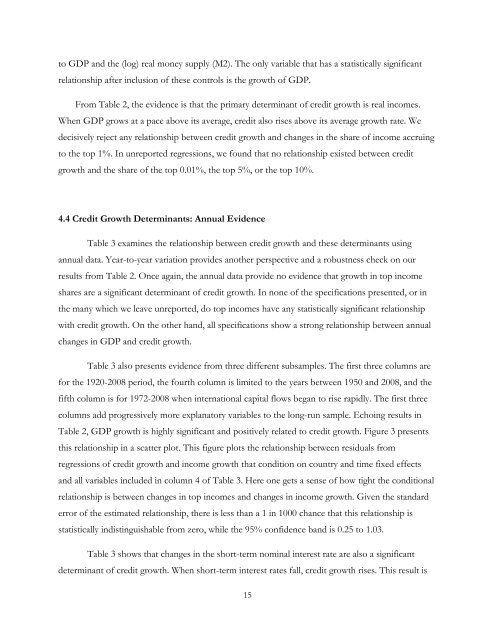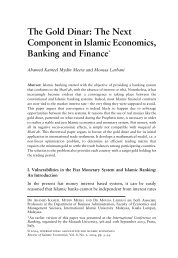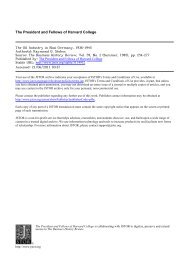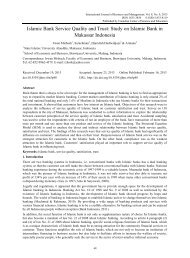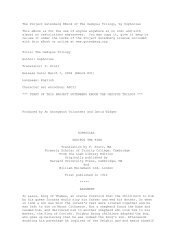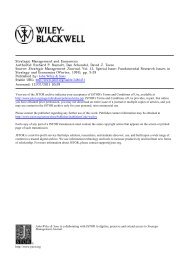Michael D. Bordo Christopher M. Meissner Working Paper 178
Michael D. Bordo Christopher M. Meissner Working Paper 178
Michael D. Bordo Christopher M. Meissner Working Paper 178
Create successful ePaper yourself
Turn your PDF publications into a flip-book with our unique Google optimized e-Paper software.
to GDP and the (log) real money supply (M2). The only variable that has a statistically significant<br />
relationship after inclusion of these controls is the growth of GDP.<br />
From Table 2, the evidence is that the primary determinant of credit growth is real incomes.<br />
When GDP grows at a pace above its average, credit also rises above its average growth rate. We<br />
decisively reject any relationship between credit growth and changes in the share of income accruing<br />
to the top 1%. In unreported regressions, we found that no relationship existed between credit<br />
growth and the share of the top 0.01%, the top 5%, or the top 10%.<br />
4.4 Credit Growth Determinants: Annual Evidence<br />
Table 3 examines the relationship between credit growth and these determinants using<br />
annual data. Year-to-year variation provides another perspective and a robustness check on our<br />
results from Table 2. Once again, the annual data provide no evidence that growth in top income<br />
shares are a significant determinant of credit growth. In none of the specifications presented, or in<br />
the many which we leave unreported, do top incomes have any statistically significant relationship<br />
with credit growth. On the other hand, all specifications show a strong relationship between annual<br />
changes in GDP and credit growth.<br />
Table 3 also presents evidence from three different subsamples. The first three columns are<br />
for the 1920-2008 period, the fourth column is limited to the years between 1950 and 2008, and the<br />
fifth column is for 1972-2008 when international capital flows began to rise rapidly. The first three<br />
columns add progressively more explanatory variables to the long-run sample. Echoing results in<br />
Table 2, GDP growth is highly significant and positively related to credit growth. Figure 3 presents<br />
this relationship in a scatter plot. This figure plots the relationship between residuals from<br />
regressions of credit growth and income growth that condition on country and time fixed effects<br />
and all variables included in column 4 of Table 3. Here one gets a sense of how tight the conditional<br />
relationship is between changes in top incomes and changes in income growth. Given the standard<br />
error of the estimated relationship, there is less than a 1 in 1000 chance that this relationship is<br />
statistically indistinguishable from zero, while the 95% confidence band is 0.25 to 1.03.<br />
Table 3 shows that changes in the short-term nominal interest rate are also a significant<br />
determinant of credit growth. When short-term interest rates fall, credit growth rises. This result is<br />
15


